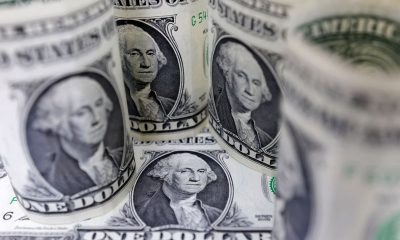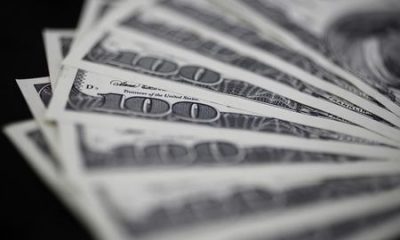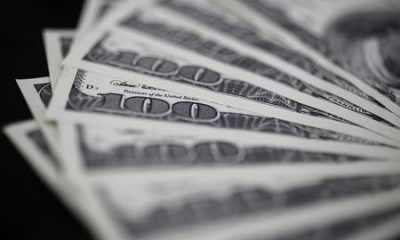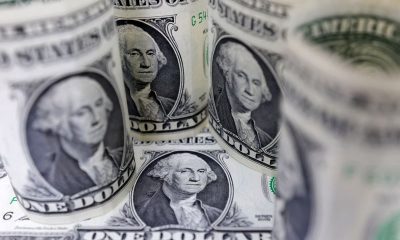Forex
Dollar softens after claims data, pound recovers from BoE-led low
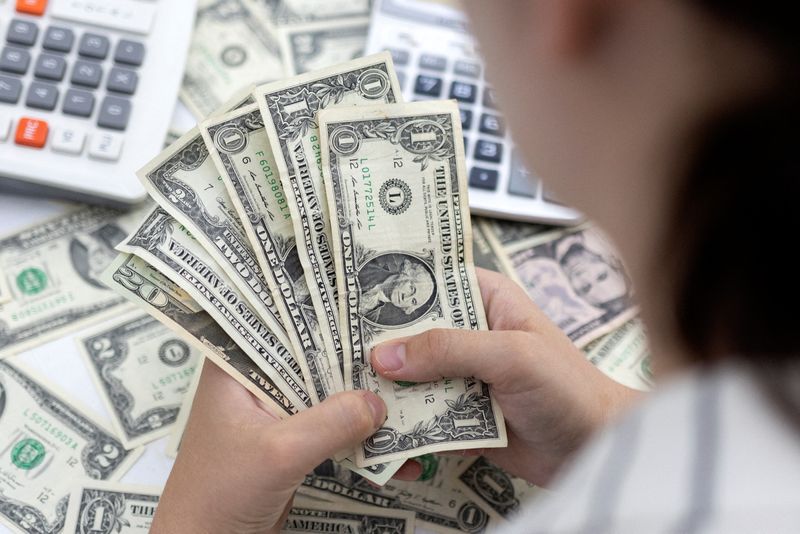
By Chuck Mikolajczak
NEW YORK (Reuters) -The dollar weakened against most currencies on Thursday after economic data showed more signs of softening in the U.S. labor market, while the pound rebounded from earlier lows after the Bank of England opened the door for an interest rate cut.
Weekly initial claims for state unemployment benefits increased 22,000 to a seasonally adjusted 231,000, the highest level since the end of last August and above the 215,000 expected by economists in a Reuters poll.
The data followed last week’s weaker-than-anticipated U.S. payrolls report and other data that showed job openings fell to a three-year low in March.
Market participants have looked towards a softening labor market as a sign that consumers will begin to slow spending and in turn help cool inflation. Data next week will include readings on consumer prices (CPI), producer prices (PPI) and retail sales.
“We did have a knee-jerk reaction in yields and the dollar lower this morning after the jobless claims number came in above expectations,” said Karl Schamotta, chief market strategist at Corpay in Toronto.
Schamotta said there were some seasonal distortions in the claims report that may have led to the higher reading, but added that recent economic data “kind of suggests that we’re seeing a deceleration in the world’s largest economy, and if we do see a sequential decline in U.S. consumer/producer price indices next week as well as the retail sales number, then that could prick that U.S. exceptionalism trade that’s been dominating markets for quite a long time.”
remove ads
.
The greenback showed little reaction to comments from Federal Reserve Bank of San Francisco President Mary Daly, who said she still sees a “really healthy” labor market and inflation that remains too high.
The , which measures the greenback against a basket of currencies, fell 0.22% at 105.28, with the euro up 0.28% at $1.0775.
Sterling strengthened in the wake of the U.S. data and was last at 0.18% at $1.2518. The pound had dropped to a low of $1.2446, its weakest level since April 24, after the Bank of England (BoE) paved the way for an interest rate cut.
The BoE’s Monetary Policy Committee had voted 7-2 to keep the central bank’s key policy rate at a 16-year high of 5.25%, with Deputy Governor Dave Ramsden joining Swati Dhingra in voting for a cut to 5%. BoE Governor Andrew Bailey said it was possible the central bank would need to cut rates by more than investors expect.
Against the Japanese yen the dollar edged 0.03% higher at 155.52 as hawkish opinions from Bank of Japan members helped slow the yen’s fall. The dollar has been slowly recovering against the Japanese currency after it tumbled 3.4% last week, its biggest weekly percentage drop since early December 2022.
The yen had earlier strengthened to 155.15 per dollar, after the BOJ’s summary of opinions showed board members were overwhelmingly hawkish at their April policy meeting, with many citing the need for steady interest rate hikes.
BOJ Governor Kazuo Ueda said the central bank will scrutinize the yen’s recent declines in guiding monetary policy.
remove ads
.
Market participants suspect Tokyo spent some $60 billion last week to stall the yen’s slide after it hit its weakest level in 34-years against the dollar around 160 yen.
In a note on Thursday, Deutsche Bank’s head of FX research, George Saravelos, reiterated that “as long as the BOJ sees no urgency to rapidly normalize policy, the fundamental backdrop for the JPY (yen) will not change.”
Forex
BofA sees potential for further USD selling by CTAs
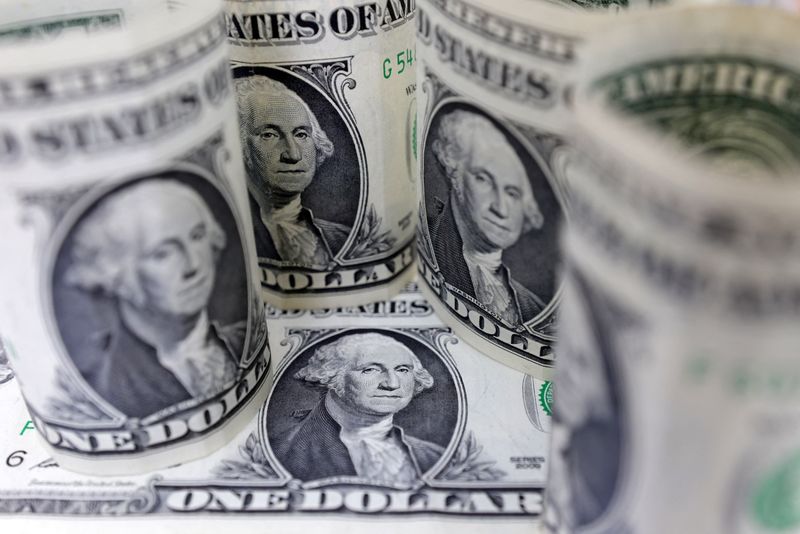
On Monday, Bank of America (BofA) provided insights into the potential actions of Commodity Trading Advisors (CTAs) in the coming week.
According to BofA, CTAs might continue to sell the U.S. dollar (USD) against most currencies following a trend that emerged after the Consumer Price Index (CPI) report led to a weakening dollar. The bank’s models indicate that USD long positions have been reduced this week.
The bank’s analysis suggests that in the foreign exchange (FX) market, CTAs are likely to persist with short covering in the euro (EUR), British pound (GBP), and Canadian dollar (CAD).
Additionally, there is an expectation for CTAs to increase their recently established long positions in the Australian dollar (AUD) and potentially initiate a long position in the Mexican peso (MXN), given the positive trend strength for the peso.
In the commodities sector, despite an increase in the price of gold last week, the trend for the precious metal declined, prompting CTAs to sell, albeit at a slower pace. BofA anticipates that this trend of selling gold and oil will continue into the next week.
The analysis also noted that CTAs’ long positions in are nearing extremely high levels, while long positions in aluminium are being unwound. In contrast, soybeans are experiencing short covering.
The bank’s report serves as a gauge of how trend-following traders might adjust their portfolios in response to market movements.
This article was generated with the support of AI and reviewed by an editor. For more information see our T&C.
Forex
BofA sees further dollar depreciation, expects G10 FX to stay in range
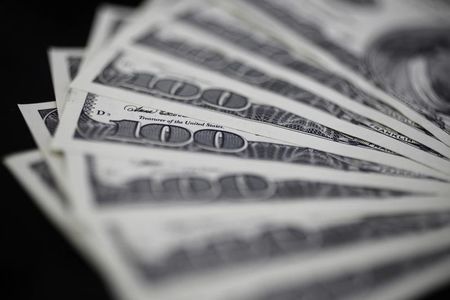
On Monday, Bank of America (BofA) analysts provided insights into the current state of G10 foreign exchange (FX) markets, noting a general sentiment of disappointment among investors due to the markets’ lack of volatility.
Despite a recent reversal in the U.S. dollar (USD), major currency pairs have not moved significantly, staying within their established ranges. BofA anticipates further depreciation of the USD, yet it emphasizes that the currency’s movements are expected to remain close to year-end consensus forecasts.
The analysis highlighted that while markets have expressed a desire for more excitement in G10 FX trading, they must come to terms with the inherent trade-off between carry trade opportunities and higher volatility. Carry trades, where investors borrow in low-yielding currencies to invest in higher-yielding ones, have been identified as a dominant trend post-global financial crisis.
However, this strategy tends to reduce market volatility, leading to what BofA describes as an “uninspiring” and “stuck in the mud” trading environment.
BofA’s commentary suggests that the pursuit of carry as a passive strategy has been a factor in dampening volatility in the FX markets. The firm underscores that investors should not expect both high carry returns and high volatility, as these market conditions are typically mutually exclusive. The lack of clear fundamental trends in G10 FX has been a source of frustration for markets, but the current trend of carry is clear, even if it leads to lower volatility.
The analysts also touched upon the anticipation around the next batch of U.S. data, which many investors hope might shift the narrative. However, BofA indicates that such expectations may be overly optimistic. The firm’s message to the markets is to adjust expectations and accept the current dynamics, with the USD continuing to play a central role in the G10 FX space.
In summary, BofA’s analysis points to a continuation of the recent patterns in G10 FX markets, with a slight downward trend in the USD value but within the bounds of recent trading ranges.
This article was generated with the support of AI and reviewed by an editor. For more information see our T&C.
Forex
Narrow dollar range likely to remain for now – Goldman
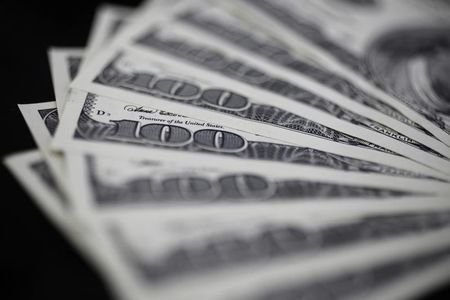
Investing.com – The U.S. dollar is trading in a calm fashion against the majors of late, and these narrow ranges will likely stay for a while longer, according to Goldman Sachs, with divergence having to wait.
AT 05:20 ET (09:20 GMT), the Dollar Index, which tracks the greenback against a basket of six other currencies, traded unchanged at 104.330, steadying after losing around 1% last week in the wake of soft U.S. inflation data.
“We think there is only limited room for the market to press Dollar shorts on the back of the inflation news,” said analysts at Goldman Sachs, in a note dated May 17.
“After all, while the prints were mostly in line with expectations, they were not in line with the target. As a result, the news does not change the policy outlook much beyond reinforcing the recent rhetoric.”
The subsequent market response has been reminiscent of the post-March FOMC FX reaction, when the response to ‘dovish dots’ stalled not because of fresh data, but instead because FX is still a relative game, and the Dollar fundamentals have not shifted much, the investment bank added.
And, this time around, we think the rally in front end rates looks more consistent with cyclical concerns rather than dovish expectations.
“That matters for FX because there is a narrow path for the Dollar to depreciate on a broad basis when growth is softening,” the bank added. “This is especially true in the current environment when faster Fed cuts would likely be met with easier policy abroad as well.”

 Forex2 years ago
Forex2 years agoForex Today: the dollar is gaining strength amid gloomy sentiment at the start of the Fed’s week

 Forex2 years ago
Forex2 years agoHow is the Australian dollar doing today?

 Forex1 year ago
Forex1 year agoUnbiased review of Pocket Option broker

 Forex2 years ago
Forex2 years agoDollar to pound sterling exchange rate today: Pound plummeted to its lowest since 1985

 Cryptocurrency2 years ago
Cryptocurrency2 years agoWhat happened in the crypto market – current events today

 World2 years ago
World2 years agoWhy are modern video games an art form?

 Stock Markets2 years ago
Stock Markets2 years agoMorgan Stanley: bear market rally to continue

 Economy2 years ago
Economy2 years agoCrude oil tankers double in price due to EU anti-Russian sanctions

